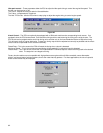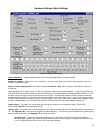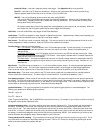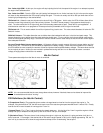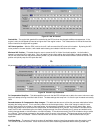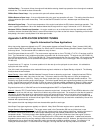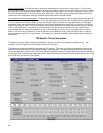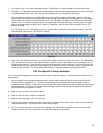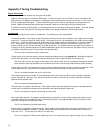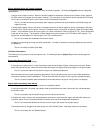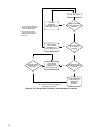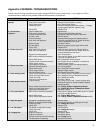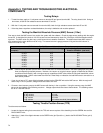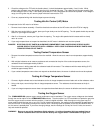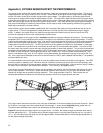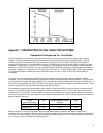
70
Appendix 3 Tuning Troubleshooting
Engine will not Start
There are several different reasons why an engine will not start.
- Make sure that the engine is receiving a RPM signal. To verify this, see if the “Fuel Pump On” which is located on the
data monitor on the base fuel map screen, is highlighted in red (indicating the fuel pump is turned on). If it is not red, the
ECU is not getting an RPM signal. There are several things to check, make sure everything is receiving power as it
should. Make sure that the proper ignition type is selected. Make sure all the ignition wiring is properly wired.
- If the ECU is receiving an RPM signal, it is most likely that there is not enough cranking fuel available. Go to the “Startup
Enrichment” screen and raise the “Cranking Pulse Width” at the proper temperature until the engine starts.
Unstable Idle
There are many things that can cause an unstable idle. The following are a list of possibilities.
- Incorrect pulse width. If the engine is open loop and the mixture is too lean (as indicated by a low oxygen sensor voltage
output of 0 - .3 volts) the engine will tend to surge. If the engine is too rich (as indicated by a high oxygen sensor voltage
output of .8 - .9 volts) the engine may load up and want to stall. Black smoke from the tailpipe is an obvious indicator of
this. If the engine is running closed loop and the O
2
Mod compensation amount is at its maximum upper limit, the
system is telling you that it is lean and that it can’t add enough fuel. The injection volume map needs to be increased. If
the engine is running closed loop and the O
2
Mod compensation amount is at its lower limit, the system is telling you that
the injection volume map is too rich and needs to be reduced at idle.
The fix for this is to alter the injection volume map.
- Oxygen sensor is too cool and causing incorrect closed loop feedback control (see Appendix 6). Generally the signs of
this are when the system is running closed loop and adding fuel, yet the engine seems to be running to rich.
The fix for this is to move the oxygen sensor closer to the cylinder head. If this is not possible, the engine should be
set to operate in open loop operation until it reaches an rpm where it has enough exhaust heat to function properly.
- Timing map is not “flat” in the area that the engine is idling at. While the engine is running, monitor the spark map. If the
map is constructed in a way that the timing changes a lot at idle due to the map, the idle may not be smooth.
The fix is to modify the spark map so it is “flat” at idle.
- The throttle plates are too far closed. If the throttle plates are too far closed, the idle air motor must add a significant
portion of the idle air. Generally, if the idle air motor shows a value of more than 30 in neutral at hot idle, the throttle
plates should be opened more.
The fix is to open the throttle plates more.
- The fuel map is not smooth in the idle area. If the injection volume map has significant increases or decreases around
the idle area, inconsistent fuel amount can be delivered to the engine causing an erratic idle.
The fix is to smooth the injection volume map in the idle area.
- Not enough spark advance. If computer controlled timing is used (which is highly recommended), the advance can be
increased at idle which can stabilize the idle. Since the timing map is fully programmable, this has no affect on other
areas of the timing such as wide-open throttle.
The fix is to increase only the idle spark timing.
- Engine should not operate in closed loop at idle. Some engines require air/fuel ratios richer than stoichiometric (14.7:1)
which closed loop operation maintains. Typically engines with large camshafts and low manifold vacuum need to run
richer than 14.7:1. The only way to do this is to run open loop.
The fix is to change the “RPM to enter closed loop” (in the “O
2
” screen) to an rpm higher than idle, such as 1400 rpm.



